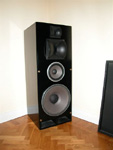Back then on my diy 4343 system some recordings were chalk and cheese. The jazz genres were generally of higher production standards than pop or rock genres. The exceptions were groups signed to major labels like Pink Floyd, the Eagles and Fleetwood Mack who had the funds to employ highly capable engineers and producers and top studio facilities.
The Blue Note label, Chesky, A&M and others were generally of superior vinyl and CD playback. This particularly applied to imported pressing. Billy Joel albums and Neil Diamond were excellent recordings as a rule while Deep Purple live recordings sounded compressed.
There are a number of narratives here. A key one is that the 4343 could readily discern the quality of a recording. It was designed for mastering.



 Reply With Quote
Reply With Quote






